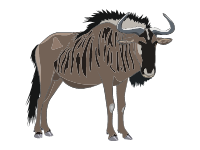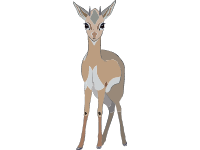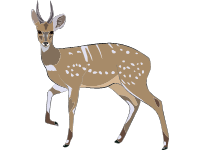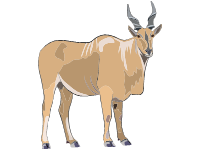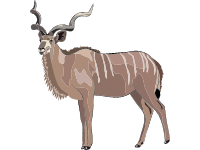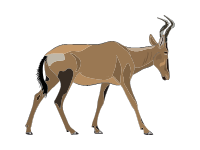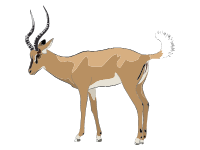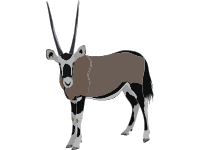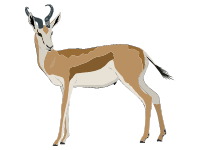Dik-dik, (genus Madoqua), any of four species of dwarf antelopes (tribe Neotragini, family Bovidae) that are adapted for life in the arid zones of eastern Africa.Dik-diks are among the smallest antelopes. Kirk’s dik-dik, the largest, stands only 35–45 cm (14–18 inches) tall and weighs 3.8–7.2 kg (8.4–15.8 pounds); females are 0.5–1 kg (1–2 pounds) heavier than males. Dik-diks look delicate, with a pointed, mobile snout, large eyes and ears, prominent preorbital glands, pipestem legs, harelike hind limbs much longer than their forelimbs, and a vestigial tail. The coat is grizzled gray to gray-brown with tan flanks, limbs, and erectile head crest and whitish eye ring, ear lining, underparts, and rump. Only the males have horns, which are corrugated, backward-slanted spikes 7.5 cm (3 inches) long. A hairy proboscis with tiny slit-like nostrils is a dik-dik specialization most developed in Guenther’s dik-dik. In this proboscis, an enlarged nasal chamber richly supplied with blood is efficiently cooled by rapid nasal panting, with minimal loss of water in the exhaled air. With other water- and energy-conserving measures (fluctuating body temperature, lowered metabolic rate, concentrated urine, dry feces, resting in shade at the hottest hours, and nocturnal activity) as well as highly selective browsing on foliage, forbs, herbs, and succulents, dik-diks are superbly equipped to subsist in waterless bush country.
